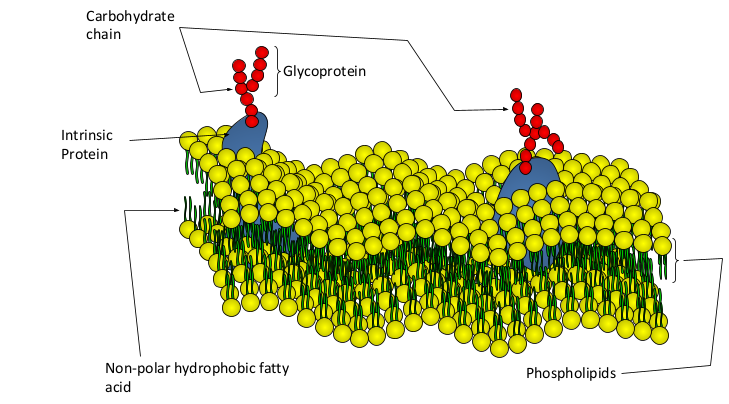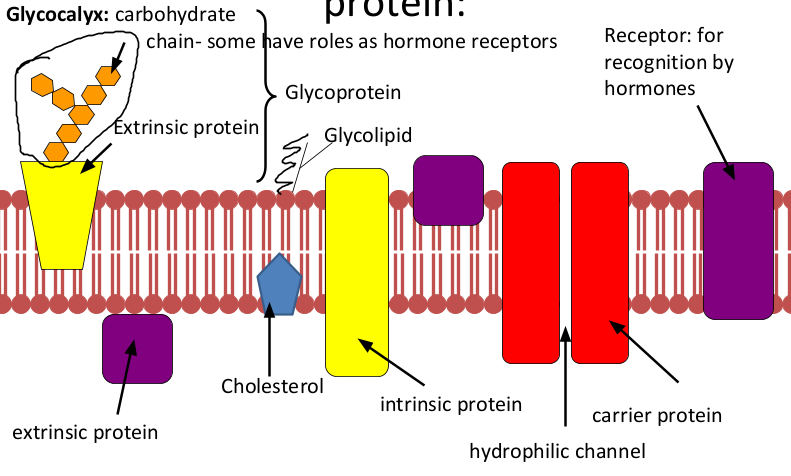-
Jobs of cell membrane
Boundary separates living cell from non living surroundings, cell signalling, controls what substances pass in and out of cells, controls uptake of nutrients and secretions and transport across the membrane
-
Appearance of the cell membrane
When seen under a light microscope the cell membrane appears as a thin line, but when seen under an electron microscope it appears as a double line
-
What are membranes mainly made up of
Phospholipids
-
What are phospholipids made up of
Hydrophilic head and fatty hydrophobic tails
-
What are the two structures of phospholipids when exposed to water
Micelle or bilayer
-
Fluid mosiac of plasma membrane

-
Proteins contained in the membrane

-
Intrinsic protein
Proteins span the whole width of the membrane
-
Extrinsic protein
Proteins are confined to the inner or outer surface of the membrane
-
Glycoprotein
Proteins with attached carbohydrate chains
-
Carrier proteins/channel proteins
Help transport substances such as ions, sugars and and amino acids which cannot diffuse across the membrane
-
Receptors
Hormones and Neurotransmitters
-
Enzymes
Catalysing reactions
-
Peripheral proteins on extracellular side of membrane
Act as receptors for hormones or neurotransmitters, or are involved in cell recognition
-
Peripheral proteins on cytosolic side of membrane
Involved in cell signalling or chemical reactions
-
Cholesterol
Type of lipid
-
Importance of cholesterol
Increasing stability and rigidity of membrane
-
Glycocalyx function
Cell to cell recognition
-
Phospholipids
Barrier. Transport of small non polar molecules that can diffuse through

